Chapter 2: Tracing the Roots and Shaping the Future: The History and Trends of Early Childhood Education
Vicki Tanck, MSEd
Course Competency: Investigate the history and current trends of early childhood education
Learning Objectives:
- Describe the origins of early childhood education
- Describe current trends that impact early childhood education
- Describe legislative acts that affect early childhood education
2.1 Introduction
The field of early childhood education (ECE) is rooted in a long and rich history, with some of today’s educational philosophies tracing their origins back to ancient Greece. Understanding the historical foundations of ECE provides valuable insight into the theories and practices that continue to shape the field today. This chapter will examine influential philosophers, key theorists, and significant legislative acts that have helped define current beliefs, practices, and emerging trends in ECE.
2.2 Origins of Early Childhood Education
For many early childhood educators today, it can be difficult to imagine a time when children were not seen as valuable, capable individuals with unique needs and rights. Over time, our understanding of childhood has beautifully evolved. We’ve moved from viewing children as primarily obedient and useful to recognizing them as inherently curious, playful individuals who thrive with nurturing and support. Common sayings like “children should be seen and not heard” reflected a broader belief that children’s voices and emotions held little value. Childhood itself was not viewed as a distinct or important stage of development; instead, children were seen as miniature adults expected to contribute to the household through labor rather than learning. Harsh discipline, as seen in the saying “spare the rod, spoil the child,” was widely accepted as necessary, even for behaviors we now understand to be typical and developmentally appropriate. Although our understanding of early childhood has advanced significantly—thanks to decades of research on brain development, social-emotional growth, and the lifelong impact of early experiences—many people today are still unaware of just how critical the early years are. This makes the role of early childhood educators not only one of caring and teaching, but also of advocacy and public education.
Blending the Present and the Past
Unlike today, attending school was not a universal experience; it was often a privilege reserved for children of specific social classes, statuses, or racial backgrounds. In contrast to today’s play-based learning, education historically centered on religious teachings, often delivered by adults without formal teacher training. Most child-rearing guidance and societal beliefs about children were based on strict morals and values of church teachings. These beliefs remained relatively unchanged until the 1400–1600s. However, during the Renaissance, new ideas emerged, and children began to be seen as innocent and good. People began to think differently and started questioning how children were treated. They observed that there was more to children than society believed. These early advocates worked to change society’s views and improve how children grew and developed. Unfortunately, many of them were punished or rejected for speaking out against the beliefs of the time (Social Sci LibreTexts, n.d.).
Today, ECE recognizes multiple domains of development—cognition and general knowledge, social-emotional, health and physical, language and communication, and approaches to learning—that work together to shape a child’s learning experience. These domains align closely with the way Dr. David Elkind categorized the key influencers of ECE into philosophers, practitioners, and theorists/researchers (Elkind, 2012).
As you read about philosophers, such as Rousseau and Locke, you will notice they focused on the “What” of experience—what knowledge is important for children to learn. Today, this perspective is reflected in discussions about developmentally appropriate curriculum content and the role of play in early learning (Elkind, 2012).
The practitioners, including Froebel and Montessori, emphasized the “How” of experience—how children engage in learning through hands-on exploration and structured environments. This aligns with our current understanding of active learning, guided discovery, and play-based approaches that support multiple domains of development (Elkind, 2012).
Theorists and researchers, like Piaget and Vygotsky, studied the “Why” of experience—why children develop and learn the way they do. Their work laid the foundation for modern developmental science, which informs how educators support cognitive, social-emotional, and linguistic growth based on stages of development and the role of social interaction (Elkind, 2012).
By integrating these perspectives, today’s ECE profession continues to be a holistic field that values what children learn, how children learn, and why their developmental journey unfolds as it does (Elkind, 2012).
Philosophical Foundations
The “What” of experience refers to the content or subject matter that is involved in the learning process—the specific knowledge, ideas, or experiences that children are exposed to and interact with as they learn. Philosophers who are concerned with the “What” focus on understanding and defining what kinds of experiences or knowledge are important or valuable in education. They explore the essence of what should be learned, such as the nature of reality, truth, and the kinds of experiences that shape human development (OpenAI, 2024).
Table 2a explains the basic ideas of some of the early philosophers in the field of early childhood education and how they influence the field today.
| The Philosophers | |
|---|---|
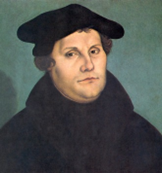 Martin Luther (1483–1546) German religious leader who helped start the Protestant Reformation. While he was not an early childhood educator, his ideas influenced education, including for young children. |
|
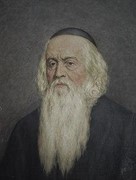 John Amos Comenius (1592–1670) A Czech educator/philosopher. His ideas on early childhood learning greatly influenced education practices. He created the first children’s picture book called Orbis Pictus (Visible World in Pictures). |
|
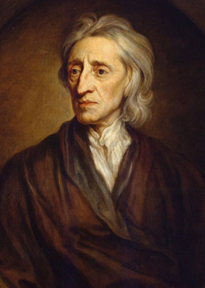 John Locke (1632–1704) English philosopher who made important contributions to education, especially in how we think about the early years of a child’s life. Locke’s ideas focused on the importance of a child’s environment in their development and learning. |
|
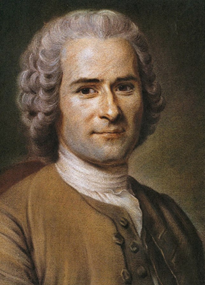 Jean-Jacques Rousseau (1712–1778) Philosopher who believed that children are inherently good and should be allowed to develop naturally. He emphasized the importance of education that supports the child’s interests and developmental stages rather than imposing adult expectations too early. |
|
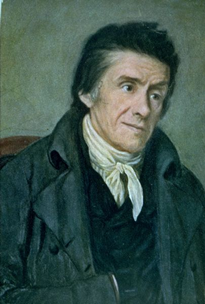 Johann Heinrich Pestalozzi (1746–1827) Swiss educator who believed teaching should focus on the whole child, not just their academic skills—an education of the head, the heart, and the hands. |
|
Reflect
Identify a teaching method or practice in modern ECE that reflects one of these philosophers’ teaching philosophies.
Educational Foundations
The “How” of experience refers to the process or methods by which learning takes place—the ways in which children acquire knowledge and skills through their interactions with the world. Practitioners (e.g. educators), are focused on the “How” because they are concerned with the practical aspects of teaching and learning. This involves understanding the strategies, activities, and techniques that facilitate learning, such as play, exploration, hands-on experiences, and other pedagogical approaches that help children engage with and make sense of the content (the “What”).
In summary, the “How” of experience emphasizes the mechanisms and processes involved in how children learn, including the instructional methods and learning environments practitioners create to support children’s development (OpenAI, 2024).
Table 2b explains the basic ideas of some practitioners in the field of ECE and how their work influences current practices.
| The Practitioners | |
|---|---|
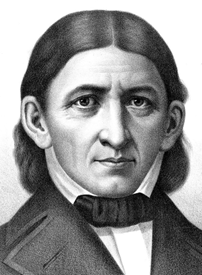 Friedrich Wilhelm Froebel (1782–1852) Froebel is often regarded as one of the key pioneers in early childhood education, particularly for his innovative ideas about learning through play. His work has significantly influenced how educators understand and support the growth of young children. View the Froebel’s Kindergarten: The Origins of Early Childhood Education YouTube video to learn more. |
|
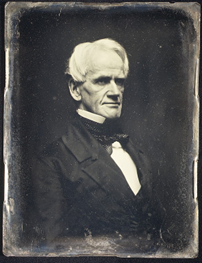 Horace Mann (1796–1859) Horace Mann is often regarded as one of the key pioneers in the development of American public education. Although his work mostly focused on establishing common schools, his ideas also helped shape early childhood education by emphasizing that every child deserves a good start in life. |
|
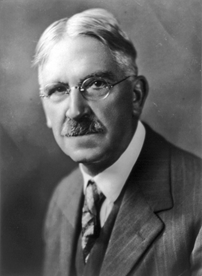 John Dewey (1858–1952) An influential American philosopher and educator who reshaped the way we think about learning. He believed education should be based on real-life experiences, allowing children to learn by doing rather than by memorizing facts. |
|
|
Rachel McMillan (1859–1917) and Margaret McMillan (1860–1931) Rachel and Margaret McMillan were pioneers in early childhood education in Britain. They believed that the first years of life are very important for a child’s overall growth—physically, emotionally, and mentally. Visit Alchetron’s web page to view images and videos related to work and legacy of these two pioneers. |
|
 Rudolf Steiner (1861–1925) Philosopher and social reformer, whose ideas led to the development of Waldorf education. He believed early childhood education should nurture the whole child—mind, body, and spirit—by focusing on free play, art, and movement rather than strict academic lessons. |
|
|
Patty Smith Hill (1868–1946) American educator who helped shape early childhood education in the United States. She believed that young children learn best through play, exploration, and social interaction rather than strict academic lessons. Fun Fact: Hill and her sister Mildred wrote the words to a song called “Good Morning to All.” Their original song was meant to be a welcome song to start the day, but the words have since been changed, and the original song is now recognized as the “Happy Birthday” song (Play and Playground Encyclopedia, n.d.). Visit the Smithsonian magazine’s web page about Patty and her sister, to see images of Patty and learn more about her life. |
|
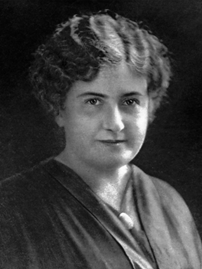 Maria Montessori (1870–1952) Montessori, an Italian physician, is often regarded as one of the key pioneers in early childhood education. Her innovative approach, which focuses on the individual needs and natural curiosity of each child, has changed the way many educators think about teaching young learners. View the Montessori School Education YouTube video to learn more. |
|
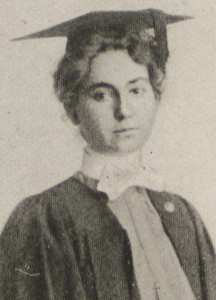 Lucy Sprague Mitchell (1878–1967) American educator who helped shape early childhood education. She reinforced the belief that children learn best when they are active, curious, and engaged in hands-on activities. |
|
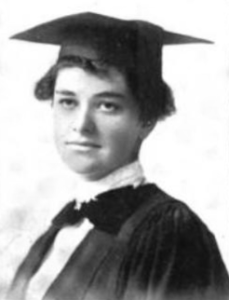 Abigail Adams Eliot (1892–1992) Eliott was a dedicated educator who played an important role in shaping early childhood education. She believed that young children learn best when they are in caring, playful environments that support their overall growth—emotionally, socially, and academically. |
|
|
Loris Malaguzzi (1920–1994) Italian educator who had a huge influence on early childhood education with the Reggio Emilia approach. He believed that children are active, creative learners who express themselves in many ways. Read more about Loris Malaguzzi by visiting the Reggio Children website. |
|
Interdisciplinary Influences
Interdisciplinary influences in ECE refer to how different areas of study, like psychology, sociology, neuroscience, and even the arts, shape our understanding of how young children learn and grow. These different fields help create a well-rounded approach to teaching, recognizing that children develop in many different ways, not just through academics.
The “Why” of experience refers to the reasons or underlying principles that explain why learning happens as a result of experience. Theorists and researchers are focused on the “Why” because they seek to understand the causes, mechanisms, and motivations behind learning. They investigate the psychological, developmental, and cognitive factors that drive how children process experiences and modify their behavior.
In other words, the “Why” is concerned with the scientific explanations and theoretical frameworks that answer questions about the purpose and reasons for learning, such as why certain experiences lead to specific outcomes in children’s development and learning. This involves exploring the deeper rationale behind the learning process and the conditions that make learning possible (OpenAI, 2024).
The following interdisciplinary influences in Table 2c have had a direct and indirect impact on education. While they developed separately from the philosophers and practitioners, they still play a key role in shaping education and child development. As you look at these influences, think about how their ideas and theories connect to the way we teach and understand children’s growth.
| Theorists and Researchers (Interdisciplinary Influences) | |
|---|---|
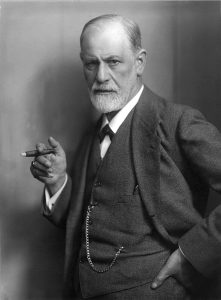 Sigmund Freud (1856–1939) Freud’s psychosexual theory provides a historical view on how early experiences shape personality and behavior. Though debated, it helps educators understand emotional and behavioral development beyond academics. |
|
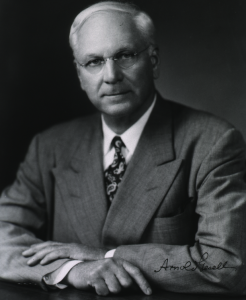 Arnold Gesell (1880–1961) American psychologist and pediatrician whose research on child development has had a lasting influence on ECE. He observed that children grow and develop at their own natural pace and identified predictable milestones in motor skills, language, and social behavior. |
|
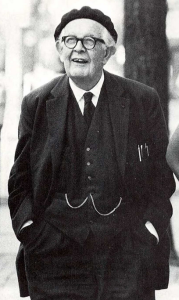 Jean Piaget (1896–1980) Swiss psychologist whose work on cognitive development has had a major influence on ECE. His theory explains how children actively construct knowledge as they interact with the world. View the Piaget’s Theory of Cognitive Development YouTube video to learn more. |
|
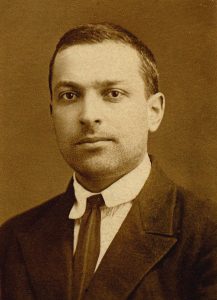 Lev Vygotsky (1896–1934) Soviet psychologist who developed his sociocultural theory of cognitive development. His work emphasizes that learning is a social process where children develop cognitively through interactions with adults and peers. View the Lev Vygotsky’s Sociocultural Theory of Learning (5 Key Elements) YouTube video to learn more. |
|
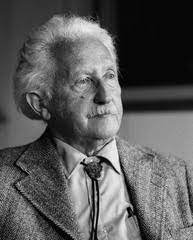 Erik Erikson (1902–1994) Psychologist known for his psychosocial development theory, which describes how children grow emotionally and socially through different stages. View the Erik Erikson’s Theory of Psychosocial Development Explained YouTube video to learn more. |
|
|
Urie Bronfenbrenner (1917–2005) Urie Bronfenbrenner was a psychologist known for his ecological systems theory, which explains how a child’s development is influenced by different social and environmental factors. View the Ecological Systems Theory YouTube video to learn more.
|
|
Contemporary Influences
Contemporary theories in ECE view learning as a holistic process that goes beyond academics to include social, emotional, and cultural growth. They build upon the foundational ideas of earlier theorists—such as Piaget’s emphasis on active learning, Vygotsky’s focus on social interaction, and Bronfenbrenner’s insights into environmental influences—to address today’s challenges. Modern researchers like David Elkind and Dan Siefel stress the importance of developmentally appropriate practices in our fast-paced world, while Bruce Perry highlights how early experiences shape brain development. Scholars such as Sonia Nieto, Gloria Ladson-Billings, and Adia Harvey Wingfield have further expanded these ideas by advocating for culturally responsive education that honors diversity. In addition, experts like Alison Gopnik, Marilyn Fleer, and Angeline Lillard demonstrate how play is a powerful tool for learning. Explanations of these perspectives are included in Table 2d.
| Contemporary Influences | |
|---|---|
|
David Elkind (born 1931) Psychologist known for his work on child development and the importance of play in early learning. View the David Elkind – Play, Love and Work YouTube video to learn more. |
|
|
Sonia Nieto (born 1943) Educator and researcher known for her work in multicultural education and equity in learning. She focuses on how culture, language, and identity affect a child’s education, especially for diverse and bilingual learners. Visit Sonia’s website to learn more. |
|
|
Gloria Ladson-Billings (born 1947) Educator and researcher known for her work on culturally relevant teaching and equity in education. She focuses on how schools can better support students from diverse backgrounds, especially children of color. View the Gloria Ladson Billings – Successful Teachers of African American Children YouTube video to learn more. |
|
 Alison Gopnik (born 1955) Psychologist and researcher known for her work on child brain development and learning. She studies how young children think, explore, and learn about the world around them. View the Alison Gopnik – The Amazing Minds of Very Young Children YouTube video to learn more. |
|
|
Dr. Bruce Perry (born 1955) Psychiatrist and neuroscientist known for his research on child brain development and the effects of trauma. He studies how early experiences, especially stress and neglect, shape a child’s ability to learn and regulate emotions. View the Dr. Bruce Perry’s 3 E’s YouTube video to learn more. |
|
|
Dan Siegel (born 1957) Neuroscientist and psychologist known for his work on brain development and emotional regulation in children. He emphasizes how early relationships and experiences shape a child’s brain and behavior. View the Why Do We Lose Control of Our Emotions YouTube video to learn more.
|
|
 Marilyn Fleer (born 1960) Educator and researcher known for her work on play-based learning and cultural-historical theory in ECE. She studies how children’s learning is shaped by their social and cultural environments. View the Conceptual PlayWorld of The Hungry Caterpillar for Preschool Children 3 min YouTube video to learn more. |
|
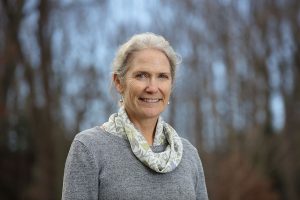 Angeline Lillard (born 1961) Psychologist known for her research on Montessori education and child development. She studies how different teaching methods affect learning and development in young children. View The Brainwaves Video Anthology: Angeline Lillard-Montessori Education YouTube video to learn more. |
|
Reflect
Think about the origins of early childhood education.
- How has ECE evolved over time?
- Explain why it is important for early childhood educators to know its history.
The Origins of Childcare in the United States
The origins of childcare in the United States can be traced back to the early 19th century, although its development has been influenced by various social, economic, and cultural factors over time. Below you will explore a broad overview of the development of childcare in the United States.
Early Beginnings (Pre-1800s)
- Before the 1800s, childcare was primarily a family responsibility, with extended family members, neighbors, or hired help often providing care when parents worked or needed assistance.
- In rural areas, children were cared for in their homes or on farms, and formal childcare did not exist.
Industrial Revolution (Late 1800s)
- The rise of industrialization in the 19th century led to a significant shift in family life. As more women entered the workforce in factories, there was an increasing need for childcare services for working-class families.
- In the 1850s, early forms of institutionalized childcare began to emerge, especially in urban areas. These were often informal arrangements such as “baby farms,” where women would care for children for a fee. These were often seen as a way to help working mothers, but they lacked regulation and oversight.
The First “Day Nurseries” (Late 1800s to Early 1900s)
- The late 1800s saw the establishment of the first formal “day nurseries” or “daycare centers,” primarily in cities, to care for children of working mothers, particularly the poor.
- These day nurseries were often run by religious organizations or charitable institutions and provided basic care, food, and shelter for children while their parents worked.
- One notable example was the New York Day Nursery Association, founded in 1854, which provided childcare for children whose parents worked long hours in factories (Social Welfare History Project, 2017).
The Progressive Era and the Rise of Social Reform (Early 1900s)
- During the Progressive Era (1890s–1920s), there was an increased interest in social reform, including the welfare of children. This period saw greater recognition of the importance of early childhood education and the role of childcare in supporting working families.
- The concept of ECE began to emerge alongside childcare, with early childhood programs beginning to focus on both care and education.
Post-World War II and Expansion (1940s–1960s)
- After World War II, as more women entered the workforce during the war, the need for reliable childcare became more apparent. The expansion of childcare centers continued in the 1950s and 1960s, especially with government involvement in supporting working mothers.
- The introduction of federal programs like the Child Care and Development Block Grant (CCDBG) in the 1960s aimed to make childcare more affordable and accessible, though these services remained primarily aimed at lower-income families.
Modern Era (1970s–Present)
- By the 1970s, the need for high-quality childcare became more widespread as more families relied on two incomes. The rise of dual-income households and single-parent families led to an increase in demand for formal childcare services.
- In 1971 the federal government introduced the Comprehensive Child Development Act, a proposal to provide universal childcare, but it was not passed. However, in the 1980s and beyond, various state and federal policies began to shape and regulate the childcare sector, leading to the creation of standards for quality childcare.
- Today, childcare in the United States is a multifaceted system, with public and private providers offering care for children of various ages. It remains a vital service for working families, though debates around affordability, quality, and access continue to shape the sector.
Through these phases, the role of childcare in the United States has evolved from informal family responsibility to a more formal, structured service with a focus on both care and education (OpenAI, 2024).
Reflect
- How do you think the shift from family-based childcare to formal early learning centers reflects changes in American society?
- What lessons from history might help us solve problems like high costs and limited access to quality childcare today?
2.3 Current Trends and Their Impact
Today’s trends in early childhood education are closely connected to the ideas and practices developed throughout history. Many of the methods we use today, like play-based learning, child-centered classrooms, and a focus on social and emotional development, are rooted in the work of early thinkers like Jean Piaget, Maria Montessori, and John Dewey. These educators emphasized the importance of understanding how children develop and learn at different stages. Over time, their ideas were built upon by modern researchers and programs, like Head Start, that focus on equity and early intervention. As we look at today’s education trends, it is clear that they are influenced by these historical ideas, which have shaped how we approach teaching young children and support their growth in all areas.
Current Trends
Current trends in ECE reflect a growing focus on innovation, equity, and child-centered learning approaches. Some of the most significant trends include the following:
1. Social-Emotional Learning (SEL): Educators are increasingly focusing on promoting emotional intelligence, self-regulation, and interpersonal skills in young children, recognizing that these competencies are foundational to academic success and well-being.
Impact: SEL programs help children develop essential skills foundational to academic success and lifelong well-being like empathy, self-regulation, and cooperation. This trend shifts the focus from traditional academics to a more holistic approach, where emotional and social development is equally important. Educators now integrate activities and curricula that support emotional literacy, creating environments where children feel safe and supported.
Reflect
How do you see children’s emotional development supported in early learning classrooms?
2. Trauma-Informed Practices: More early childhood programs are adopting trauma-informed approaches that understand the impact of adverse childhood experiences (ACEs) and support children through resilience-building strategies. ACEs are potentially traumatic events that occur in childhood, such as abuse, neglect, or household struggles. These experiences can have lasting effects on a person’s health, development, and well-being throughout their life.
Impact: More programs are becoming sensitive to the effects of trauma and adverse experiences on young children. This impacts teacher training, curriculum design, and classroom management, as educators are now equipped to recognize signs of trauma and implement strategies that promote resilience, safety, and healing. It encourages flexible teaching and nurturing environments while considering individual children’s emotional states.
Reflect
How can you create a sense of safety and trust in your learning environment?
3. STEM and STEAM Integration: There is a growing emphasis on incorporating science, technology, engineering, arts, and mathematics (STEAM) into early childhood learning experiences. Hands-on, inquiry-based learning fosters creativity, critical thinking, and problem-solving skills from a young age.
Impact: Introducing STEM (science, technology, engineering, and mathematics) and STEAM (adding arts) in ECE prepares children for future learning and problem-solving. Hands-on, inquiry-based activities encourage exploration and critical thinking, making learning more engaging and relevant. Teachers adapt lesson plans to include more experimentation, construction, and exploration, often requiring new materials and teaching approaches.
Reflect
Think about incorporating STEM/STEAM programming. What are the pros and cons of introducing this into your learning plans?
4. Technology in Early Childhood: The use of technology in classrooms has expanded, especially following the COVID-19 pandemic. Digital tools and apps for interactive learning, online teaching platforms, and using technology to document children’s development are becoming common.
Impact: Integrating technology into early childhood classrooms brings both opportunities and challenges. On one hand, digital tools can enhance learning through interactive apps and virtual experiences. On the other hand, it raises concerns about screen time, requiring careful balance to ensure that technology supports rather than replaces real-world, play-based experiences. Educators must also stay current with technology and digital literacy skills.
Reflect
How do you determine the appropriate amount and type of technology used in your classroom?
5. Culturally Responsive Teaching: There is an increasing awareness of the need for culturally and linguistically relevant pedagogy. Programs are integrating diverse books, materials, and activities that reflect children’s backgrounds, promoting equity and inclusivity.
Impact: There is a growing emphasis on diversity, equity, inclusion, and belonging (DEIB) in classrooms. Culturally responsive teaching means that educators are adapting their materials, communication, and interactions to reflect the diverse backgrounds of children and their families. This trend impacts curriculum choices, classroom discussions, and the types of books and resources made available. Teachers are becoming more aware of unconscious biases and working to foster inclusive environments where all children feel valued.
Reflect
How do you challenge your own biases and promote inclusivity?
6. Focus on Play-Based Learning: The importance of play as a vehicle for learning is gaining more recognition. Research supports play-based and child-initiated learning approaches as developmentally appropriate for young children.
Impact: The resurgence of play-based learning supports a child-centered approach where exploration and imagination are prioritized over rote learning. This impacts classroom setup, curriculum planning, and assessment practices. Educators must create environments encouraging independent and cooperative play, promoting cognitive, language, and social development through natural interactions and hands-on activities. Play is essential for developing critical thinking, creativity, and problem-solving.
Reflect
How would you explain the value of play-based learning to families? Other educators?
7. Outdoor and Nature-Based Education: Forest schools, outdoor classrooms, and nature-based education programs are on the rise, promoting physical activity, connection with nature, and experiential learning opportunities.
Impact: Nature-based education emphasizes the benefits of outdoor play and learning, promoting physical activity, creativity, and a connection with the environment. This shift often requires changes to classroom schedules, incorporating outdoor time as a structured part of the day. Schools may also redesign playgrounds or include natural elements like gardens, mud kitchens, and outdoor classrooms. Research shows that outdoor experiences help reduce stress and support cognitive development, leading to healthier, happier children.
Reflect
What barriers do you experience or anticipate in engaging students in outdoor learning experiences and how will you address these barriers?
8. Family Engagement and Support: Early childhood education programs are increasingly recognizing the role of families in children’s learning and development. Schools are working to engage families through home–school partnerships, offering resources to support parents and caregivers.
Impact: The trend toward increased family engagement reshapes the role of teachers, who now serve as partners in supporting children’s learning beyond the classroom. Teachers communicate more frequently with families, provide resources, and involve them in educational activities. Programs now offer workshops, home visits, and community resources to support parents in understanding their child’s development, creating a more collaborative approach to education.
Reflect
What benefits do you see to engaging families in their children’s education?
9. Focus on Equity and Inclusion: There is an increasing focus on ensuring all children, including those with disabilities or diverse backgrounds, have access to high-quality education. Programs are seeking ways to reduce achievement gaps and address systemic inequalities.
Impact: This trend drives a commitment to making ECE accessible to all children, regardless of ability, socioeconomic status, or background. Schools are more actively addressing the needs of children with disabilities, English language learners, and those from marginalized communities. Teachers are incorporating inclusive teaching strategies, using adaptive materials, and creating equitable learning opportunities, while policymakers push for funding and support for underserved populations.
Reflect
What steps have you, or will you, take to address equity in your teaching practices?
10. Holistic Child Development: The shift toward nurturing the “whole child” through comprehensive approaches that include physical health, nutrition, mental health, and family support systems is gaining traction.
Impact: With a shift toward focusing on the “whole child,” education systems are integrating health, nutrition, mental well-being, and family support into their offerings. Schools are developing partnerships with health and social services, offering meal programs, wellness initiatives, and mental health supports. Teachers and administrators recognize that children’s development is influenced by multiple factors, so there is more emphasis on coordinating efforts with health care providers and community resources.
Reflect
What community organizations might you partner with to enhance the support systems available to families in your program?
These trends reflect a broader understanding of the complexities of early childhood development and the growing need to adapt to the diverse needs of children in the 21st century. In summary, these trends are leading to more comprehensive, child-centered, and inclusive practices in ECE. They require educators to adapt their teaching methods, engage in ongoing professional development, and collaborate more with families and communities to ensure all children receive high-quality early learning experiences (OpenAI, 2024).
Reflect
How do you think the current trends in ECE, such as social-emotional learning, play-based learning, and equity-focused practices, connect with historical educational ideas, and how might they shape the future of education?
2.4 Legislative Acts
Federal Legislation Supporting Early Learning
Government funding and legislation play a crucial role in supporting early childhood education and care in the United States. Over the years, various programs have been developed to help ensure that all children, particularly those from low-income or disadvantaged backgrounds, have access to quality care and education. Here’s an overview of some key programs and laws that have shaped the landscape of ECE in the United States:
Emergency Nursery School (1930s)
- Overview: Established during the Great Depression, the Emergency Nursery School aimed to help children of working mothers by providing childcare and basic education. It was one of the first attempts at formal, government-supported ECE.
- Impact: This program laid the foundation for later government involvement in early care and education, especially for children from low-income families.
Aid to Dependent Children (ADC) (1935)
- Overview: Part of the Social Security Act, ADC provided financial assistance to children who had a parent who was absent, disabled, or deceased. It helped families who were struggling financially by providing resources for basic care.
- Impact: ADC helped support families and children, setting the stage for future policies aimed at assisting low-income families.
Head Start (1965)
- Overview: Head Start is a federally funded program designed to provide early education, health services, and family support to low-income children. It serves children from birth to age 5 and focuses on school readiness.
- Impact: Head Start has made a significant impact by providing early learning experiences to children in need, helping them succeed academically and socially.
Individuals With Disabilities Education Act (IDEA) (1975; amended in 1990 and 2004)
- Overview: IDEA ensures that children with disabilities receive a free, appropriate public education (FAPE). It includes Part C for infants and toddlers and Part B for preschool-aged children, ensuring they have access to early intervention services.
- Impact: IDEA promotes inclusion by requiring early childhood programs to provide accommodations and individualized support services for children with disabilities.
Social Services Block Grant (SSBG) (1981)
- Overview: SSBG provides funding to states for a range of social services, including childcare programs, child protective services, and family support services.
- Impact: SSBG has enabled states to provide critical services to children and families, helping to improve access to care and education.
Child Care and Development Block Grant Act (CCDBG) (1990; reauthorized in 2014)
- Overview: CCDBG provides funding to states to help low-income families access affordable childcare, ensuring that parents can work or attend school. The 2014 reauthorization emphasized improving childcare quality.
- Impact: This program has made childcare more affordable and accessible while improving the safety and quality of care by setting standards for providers.
Family and Medical Leave Act (FMLA) (1993)
- Overview: FMLA allows eligible employees to take unpaid, job-protected leave for family and medical reasons, including the birth and care of a newborn child.
- Impact: FMLA supports early childhood development by allowing parents to take time off to bond with their newborns and provide care without the fear of losing their jobs.
Temporary Assistance for Needy Families (TANF) (1996)
- Overview: TANF replaced ADC and provides temporary financial assistance to low-income families with children. The program focuses on promoting work and self-sufficiency, offering support for basic needs like food, housing, and childcare.
- Impact: TANF supports low-income families by providing resources and opportunities to move toward self-sufficiency, while also supporting children’s basic needs.
Child Care Access Means Parents in School Act (CCAMPIS) (1998)
- Overview: CCAMPIS provides funding for campus-based childcare services for low-income parents who are enrolled in postsecondary education.
- Impact: This program helps student parents complete their education by offering affordable childcare, indirectly supporting ECE.
No Child Left Behind Act (NCLB) (2001)
- Overview: While primarily focused on K–12 education, NCLB emphasized early literacy initiatives such as Reading First and Early Reading First to improve reading skills in preschool children.
- Impact: NCLB highlighted the importance of early literacy and influenced ECE, even though it was criticized for its focus on standardized testing.
Birth to Five Policy Alliance (2005)
- Overview: This initiative supports policies that promote the development of infants and toddlers, aiming to integrate services across early care and education programs.
- Impact: The alliance advocates for policies that improve access to quality early education, focusing on birth-to-five systems and supporting the early childhood workforce.
Child Nutrition Act (1966; reauthorized in the Healthy, Hunger-Free Kids Act of 2010)
- Overview: This act provides funding for programs like the National School Lunch Program and the Child and Adult Care Food Program (CACFP), ensuring that children in early childhood programs have access to nutritious meals.
- Impact: The act promotes healthy development by ensuring that children receive nutritious meals, which is essential for their physical health and readiness to learn.
Race to the Top – Early Learning Challenge (RTT–ELC) (2011)
- Overview: The RTT–ELC was a federal grant competition aimed at encouraging states to improve ECE and enhance school readiness.
- Impact: This initiative raised the quality of early learning programs, enhanced educator professional development, and improved early learning standards.
Preschool Development Grant Program (2014)
- Overview: This grant program supports state efforts to expand and improve preschool programs, particularly in high-need communities.
- Impact: The program has helped increase access to preschool, improve educator qualifications, and enhance curriculum and assessments to better prepare children for school.
Every Student Succeeds Act (ESSA) (2015)
- Overview: ESSA replaced NCLB and gave states more flexibility in implementing education standards. It also provided support for ECE by encouraging states to invest in preschool programs.
- Impact: ESSA promoted collaboration between early childhood programs and K–12 education systems, improving early learning opportunities and school readiness.
American Rescue Plan Act (ARPA) (2021)
- Overview: ARPA provided significant funds to support ECE in response to the COVID-19 pandemic, including funding for childcare providers.
- Impact: ARPA helped stabilize the childcare industry, supported workforce retention, and provided childcare subsidies to families, ensuring continued access to ECE during the pandemic.
These laws and programs collectively shape the structure, accessibility, and quality of ECE in the United States. By providing financial support, improving childcare quality, ensuring inclusion for children with disabilities, and promoting early learning initiatives, these policies help ensure that more children, especially those from disadvantaged backgrounds, have access to the resources they need for a strong start in life (OpenAI, 2024).
Reflect
- How do you think government funding and laws, like Head Start and the American Rescue Plan Act, help improve ECE?
- What might be the long-term effects on children and society if these supports were not available?
State Legislation Supporting Early Learning
Individual states manage early education and care by creating and enforcing policies that ensure young children have access to quality programs. They oversee things like licensing requirements for childcare centers and preschools, making sure that these programs are safe and meet certain standards. States also determine funding for early childhood programs, including how money is distributed for programs like Head Start or childcare assistance for low-income families. Each state can decide on its own rules for eligibility in programs, meaning they can choose who gets access to certain services. They also make sure teachers and caregivers in early education programs meet certain qualifications, like having specific training or certifications. Overall, states work to ensure that young children receive the education and care they need for healthy development.
In Wisconsin, the Wisconsin Department of Children and Families (DCF) is responsible for licensing and monitoring licenses for childcare and family childcare centers. According to the DCF website:
“Our department’s vision is that all Wisconsin children and youth are safe and loved members of thriving families and communities. To reach our goal, we are focused on reducing racial and ethnic disparities in our programs and services, focusing on five key priorities:
-
- Systematically increasing access to quality early care and education programs that support the needs of children and families statewide.
- Putting families in the center of successful child support and good-paying jobs programs.
- Safely transforming the child welfare and youth justice system to dramatically increase the proportion of children supported in their homes and communities.
- Dedicating additional resources to support vulnerable and historically underserved youth, specifically teenage girls, kids with complex care needs, and youth transitioning out of the foster care system.
- Fostering a workplace where agency staff feel engaged, valued, and connected to our vision” (Department of Children and Families, 2024).
In Wisconsin, several legislative acts and state-specific programs directly impact ECE. These policies focus on improving the quality of care, promoting access, and ensuring the health, safety, and developmental well-being of young children. Below are key legislative acts and initiatives affecting ECE in Wisconsin:
Wisconsin Birth to 3 Program (Part of IDEA) (1986)
- Overview: The Birth to 3 Program, governed by Part C of the federal Individuals with Disabilities Education Act (IDEA), provides early intervention services to infants and toddlers with developmental delays and disabilities in Wisconsin.
- Impact: This program ensures that young children with special needs receive individualized services, such as speech therapy, occupational therapy, and developmental support, from birth to age 3. It supports family-centered approaches and helps children access necessary resources and services to reach developmental milestones.
Wisconsin Shares Child Care Subsidy Program (Part of the Federal Personal Responsibility and Work Opportunity Reconciliation Act) (1996)
- Overview: Wisconsin Shares provides financial assistance to low-income families to afford quality childcare, so parents can work or participate in education or training programs.
- Impact: This program makes ECE more accessible to working families. It also influences childcare providers by linking subsidies to participation in the YoungStar rating system, encouraging higher standards and professional development among providers.
Wisconsin Model Early Learning Standards (WMELS) (2003)
- Overview: While not a legislative act, WMELS is a set of state standards developed to guide early childhood education programs across Wisconsin. These standards outline developmental expectations for children from birth to age 8 across various domains, including language and communication, cognition and general knowledge, social-emotional, approaches to learning, and health and physical development.
- Impact: WMELS serves as a framework for early childhood educators, informing curriculum development and assessment practices across childcare centers, preschools, and Head Start programs. The standards promote developmentally appropriate practices that align with statewide educational goals.
Wisconsin Act 293—Safe Sleep for Infants (2006)
- Overview: This law requires childcare providers in Wisconsin to follow safe sleep practices for infants, such as placing babies on their backs to sleep and avoiding loose bedding, as recommended by the American Academy of Pediatrics.
- Impact: Act 293 has contributed to reducing sudden infant death syndrome (SIDS) in childcare settings by mandating safe sleep practices. It also requires ongoing training for childcare providers on safe sleep guidelines.
Early Childhood Advisory Council (ECAC) (2008)
- Overview: Established under Governor Jim Doyle in 2008, ECAC makes policy recommendations to ensure high-quality early care and education in Wisconsin. It focuses on aligning services, improving early childhood workforce conditions, and increasing family engagement.
- Impact: ECAC advises on legislative and policy decisions, advocating for the needs of young children and improving the state’s early childhood system. It plays a critical role in shaping policies that affect early care and education in Wisconsin.
Wisconsin Act 166—Four-Year-Old Kindergarten (4K) Expansion (2010)
- Overview: This law allows school districts to claim state aid for offering 4-year-old kindergarten (4K) programs. The law has significantly expanded access to 4K in Wisconsin, making early education programs available in many public school districts.
- Impact: The act supports the expansion of public pre-kindergarten (4K) programs across the state, increasing early learning opportunities for 4-year-olds. Many districts partner with community-based early childhood programs, including childcare centers and Head Start, to offer 4K. This expansion has increased school readiness and promoted early literacy and social-emotional skills among Wisconsin’s youngest learners.
YoungStar Quality Rating and Improvement System (QRIS) (2010)
- Overview: YoungStar is Wisconsin’s childcare quality rating and improvement system, created to assess, improve, and communicate the quality of early childhood programs. It was enacted through the Wisconsin Legislature as part of efforts to increase accountability and promote high-quality care for children (Wisconsin Department of Children and Families, n.d.).
- Impact: The program assigns ratings to licensed childcare providers based on quality indicators such as staff qualifications, curriculum, and family engagement. Providers that achieve higher ratings receive higher reimbursement rates through the Wisconsin Shares childcare subsidy program. This initiative helps parents make informed choices about early care and education, while encouraging continuous improvement among providers.
Wisconsin Act 32—Licensing of Child Care Providers (2011)
- Overview: Act 32 imposed stricter regulations for childcare providers, including new background checks, professional development requirements, and higher health and safety standards. It also introduced changes to how childcare centers are licensed and monitored in the state.
- Impact: By improving licensing and regulation of childcare facilities, this law aims to enhance the quality of care provided to young children in Wisconsin. It promotes higher standards of care and safety across all licensed childcare programs, contributing to better outcomes for children.
Wisconsin Act 10—Collective Bargaining and Education Funding (2011)
- Overview: Act 10, also known as the “Budget Repair Bill,” significantly reduced collective bargaining rights for public employees, including teachers. It also led to changes in education funding.
- Impact: While not specifically focused on ECE, Act 10 impacted public school districts and their ability to negotiate salaries and working conditions for teachers. This has had indirect effects on the resources available for ECE programs in public schools, including compensation for 4K teachers.
Wisconsin’s Race to the Top—Early Learning Challenge (2013)
- Overview: Wisconsin participated in the federal Race to the Top Early Learning Challenge, a competitive grant program that aimed to improve early learning and development programs.
- Impact: Through this initiative, Wisconsin increased investments in ECE, enhanced the YoungStar rating system, and improved data systems for tracking child outcomes. The grant also supported the alignment of early learning standards with K–12 education and professional development for early childhood educators.
Wisconsin Act 59—Safe Childcare Facilities (2017)
- Overview: Act 59 imposed stricter health and safety requirements for childcare centers, including background checks, staff training, and facility inspections. It requires compliance with federal health and safety standards for providers participating in the Wisconsin Shares program.
- Impact: This law enhances the safety and quality of childcare facilities by ensuring providers meet health, safety, and staff training requirements. It also aligns Wisconsin with federal childcare health and safety standards, making childcare environments safer for children and more accountable to families.
Wisconsin Act 20—Early Literacy and Kindergarten Entry (2023)
- Overview: Act 20 made early literacy screening mandatory for all 4K and 5K students in Wisconsin public schools. The law requires school districts to assess children’s literacy skills and intervene early when students are at risk of reading difficulties.
- Impact: By mandating early literacy assessments, this law ensures that schools identify children who need additional support in reading before they fall behind. It also emphasizes the importance of early intervention, linking ECE programs with the state’s efforts to improve literacy outcomes.
These legislative acts and initiatives in Wisconsin emphasize quality, safety, access, and developmental support in ECE. Programs like WMELS, YoungStar, and Wisconsin Shares ensure that early childhood educators and childcare providers meet high standards, while laws like Act 293 on safe sleep practices and Act 59 on childcare safety create secure and nurturing environments for young children. Additionally, expanding access to 4K programs and providing early intervention services under Birth to 3 helps ensure children in Wisconsin receive the foundation they need for lifelong success (OpenAI, 2024).
Reflect
- How do you think state policies and funding—like Wisconsin’s YoungStar and early learning standards—help create safe, high-quality early education environments?
- What might happen if these state supports were not available?
2.5 Conclusion
In conclusion, the history of ECE has helped shape the approach to educating young children today. Current trends, like focusing on inclusive education, social-emotional learning, and involving families, are changing how early education programs support children’s growth. Laws such as IDEA and the Childcare and Development Block Grant have played an important role in making sure that all children, especially those from low-income families, have access to quality education and care. As these trends and laws continue to change, they create a system that recognizes the importance of early learning, making sure every child has the best start in life.
Reflect
Reflect on the key concepts of the chapter and connect them to your understanding of early childhood education and its importance.
- Think about the origins of ECE: How has ECE evolved over time and why is it important early childhood educators know its history?
- Consider the current trends in ECE: Think about the importance of one or two trends. How can they positively impact young learners?
- Reflect on the role of legislative acts in ECE: How have laws like IDEA and the Childcare and Development Block Grant shaped the way children receive care and education today? Why do you think these laws are essential for creating equal opportunities for all children?
- Connect to your personal experiences: Think about your own experiences with ECE, whether as a child, sibling, or in an observational setting. How have these trends and laws affected your experience or the experience of others in early education programs?
2.6 Learning Activities
2.7 References
Brodie, K. (2024a). McMillan sisters: Pioneers of early years outdoor education. Early Years TV. https://www.earlyyears.tv/mcmillan-sisters-pioneers-of-early-years-outdoor-education/
Brodie, K. (2024b). Sigmund Freud in early childhood education: A practical guide. Early Years TV. https://www.earlyyears.tv/sigmund-freud-in-early-childhood-education-a-practical-guide/
Early Years TV. (n.d.-a). David Elkind’s theories on child development and cognition. https://www.earlyyears.tv/david-elkinds-theories-on-child-development-and-cognition/
Early Years TV. (n.d.-b). Erik Erikson’s psychosocial development. https://www.earlyyears.tv/erik-erikson-psychosocial-development/
EdImprovement. (n.d.). Intergenerational cycle of trauma. https://www.edimprovement.org/post/intergenerational-cycle-of-trauma
The Education Hub. (2020). The Steiner approach. The Education Hub. https://theeducationhub.org.nz/the-steiner-approach/
Elkind, D. (2012). The many modes of experience and learning: The grandmasters of ECE. Exchange: The Early Childhood Leaders’ Magazine Since 1978, (203), 8–10.
Encyclopedia Britannica. (n.d.). Horace Mann. Encyclopedia Britannica. https://www.britannica.com/biography/Horace-Mann
Froebel Trust. (n.d.). Froebel’s principles and practice today. Froebel Trust. https://www.froebel.org.uk/uploads/documents/FT-Froebels-principles-and-practice-today.pdf
Gowrie NSW. (n.d.). Lev Vygotsky’s theory of child development. https://www.gowriensw.com.au/thought-leadership/vygotsky-theory
Ingenious Baby. (n.d.). Interview with Dr. Dan Siegel. https://ingeniousbaby.com/interview/dr-dan-siegel/
Johann Heinrich Pestalozzi Society. (n.d.). Home. https://jhpestalozzi.org/
Kerr, G. (2022). A brief history of childhood. http://dx.doi.org/10.4324/9781003035138-3
Kokoros, T. (2023). Embracing John Dewey’s theories: A path to improving early childhood education practices. Ideas and Innovations in Early Childhood Education. https://www.earlychildhoodeducationandcare.com/bloggers/2023/3/29/ng8mtx5onwqcvm8i0q6us3jlzz4ukz
Liebovich, B. (2020). Our proud heritage. NAEYC’s first president: Patty Smith Hill. National Association for the Education of Young Children. https://www.naeyc.org/resources/pubs/yc/mar2020/naeycs-first-president-patty-smith-hill
Lumen Learning. (n.d.). The early contributors. In ECHD 250: Children with special needs. https://courses.lumenlearning.com/suny-canton-echd250/chapter/the-early-contributors/
National Association for the Education of Young Children. (2016). Our proud heritage: Abigail Eliot and Margaret McMillan—Bringing the nursery school to the United States. https://www.naeyc.org/resources/pubs/yc/may2016/our-proud-heritage
National Association for the Education of Young Children. (2017). Our proud heritage: Circle time, free play, and field trips. https://www.naeyc.org/resources/pubs/yc/nov2017/our-proud-heritage-legacies-pioneers
Oliveira, P. (2018). True then, truer now: The enduring contributions of Arnold Gesell. Young Children, 73(3), 87–90. https://www.naeyc.org/resources/pubs/yc/jul2018/enduring-contributions-arnold-gesell
OpenAI. (2024). ChatGPT (Feb 15 version) [Large language model]. https://chat.openai.com/
OpenAI. (2025). ChatGPT (Jan 25 version) [Large language model]. https://chat.openai.com/
Play and Playground Encyclopedia. (n.d.). Patty Smith Hill. https://www.pgpedia.com/h/patty-smith-hill
Pound, L. (2020). Early years pioneers – Loris Malaguzzi. Nursery World. https://www.nurseryworld.co.uk/content/features/early-years-pioneers-loris-malaguzzi/
Simply Psychology. (n.d.). Jean Piaget’s theory of cognitive development. https://www.simplypsychology.org/piaget.html
Social Sci LibreTexts. (n.d.). 1.2: History of early childhood education. LibreTexts. https://socialsci.libretexts.org/Bookshelves/1.02:_History_of_Early_Childhood_Education
Social Welfare History Project. (2017). Nursery schools: History (1844–1919). Virginia Commonwealth University. https://socialwelfare.library.vcu.edu/programs/nursery-schools-history-1844-1919/
Sticks & Stones Education. (n.d.). Theorist in the spotlight: Urie Bronfenbrenner and the EYLF. https://www.sticksandstoneseducation.com.au/blogs/educators-notebook-the-early-years-edition/theorist-in-the-spotlight-urie-brofenbrenner
Trillium Montessori. (2024). Montessori education: Beginner’s guide. https://www.trilliummontessori.org/montessori-education/
Wisconsin Department of Children and Families. (n.d.). YoungStar. https://dcf.wisconsin.gov/youngstar
Wisconsin Department of Children and Families. (2024). About us / vision & priorities. https://dcf.wisconsin.gov/about-us
Images:
“Martin_Luther,_1529” by Lucas Cranach the Elder (1472–1553) is in the Public Domain.
“John_Amos_Comenius_portrait” by Karol Miloslav Lehotský (1879–1929) is in the Public Domain.
“JohnLocke” by Godfrey Kneller (1646–1723) is in the Public Domain.
“Jean-Jacques_Rousseau_(painted_portrait)” by Maurice Quentin de La Tour (1704–1788) is in the Public Domain.
“Johann_Heinrich_Pestalozzi” by F.G.A. Schöner is in the Public Domain.
“Frederick-Froebel-Bardeen” by C.W. Bardeen, publisher is in the Public Domain.
“Horace_Mann_MET_37.14.25” by Southworth & Hawes is licensed under CC0, Public Domain.
“Maria_Montessori_(portrait)” by unknown author is in the Public Domain.
“Steiner_um_1905” by Otto Rietmann is in the Public Domain.
“John_Dewey_cph.3a51565” by Underwood & Underwood is in the Public Domain.
“LucySprague1900” by unknown author is in the Public Domain.
“Abigail_Adams_Eliot_(1892–1992)_at_Radcliffe_in_1914” by unknown author is in the Public Domain.
“Sigmund_Freud,_by_Max_Halberstadt_(cropped)” by Max Halberstadt is in the Public Domain.
“nlm_nlmuid-101415950-img” by Harris & Ewing is in the Public Domain.
“Jean_Piaget_in_Ann_Arbor” by unknown author is in the Public Domain.
“Lev-Semyonovich-Vygotsky-1896-1934” by unknown author is in the Public Domain.
“Erik_H._Erikson” by Erikson institute is licensed under CC BY-SA 4.0
“Alison_Gopnik_Photo” by Kathleen King is licensed under CC BY-SA 3.0
“Marilyn_Fleer_FASSA_Screenshot_2021-11-11_at_06.00.44” by Academy of the Social Sciences in Australia is licensed under CC BY 3.0
“Angeline_S_Lillard” by UVA-CDL is licensed under CC BY-SA 4.0
“qrisnetwork” by QRIS National Learning Network is in the Public Domain. Access for free at https://qrisnetwork.org
Videos:
Sprouts. (2021, May 31). Froebel’s kindergarten: The origins of early childhood education [Video]. YouTube. All rights reserved. https://www.youtube.com/watch?v=lieFOzjLHM8
Sprouts. (2016, June 14). Montessori school education [Video]. YouTube. All rights reserved. https://www.youtube.com/watch?v=UzmvtVAuuyI
Sprouts. (2018, August 1). Piaget’s theory of cognitive development [Video]. YouTube. All rights reserved. https://www.youtube.com/watch?v=IhcgYgx7aAA&t=223s
Helpful Professor Explains!. (2023, November 26). Lev Vygotsky’s sociocultural theory of learning (5 key elements) [Video]. YouTube. All rights reserved. https://www.youtube.com/watch?v=gPKV2f7uDAo
Collign Testing and Pyschology Services. (2019, May 24). Erik Erikson’s theory of psychological development explained [Video]. YouTube. All rights reserved. https://www.youtube.com/watch?v=6XxFmXkD8M8
Odyssey Institute. (2020, October 6). Ecological systems theory [Video]. YouTube. All rights reserved. https://www.youtube.com/watch?v=mRdlWPB8xS4
The Brainwaves Video Anthology. (2016, January 12). David Elkind – Play, love and work [Video]. YouTube. All rights reserved. https://www.youtube.com/watch?v=IOWbh8qqTGU
Kids Want to Know. (2017, March 12). Why do we lose control of our emotions? [Video]. YouTube. All rights reserved. https://www.youtube.com/watch?v=3bKuoH8CkFc
Jewish Family Service: Adoption and Foster Care. (2021, January 20). Dr. Bruce Perry’s 3 E’s [Video]. YouTube. All rights reserved. https://www.youtube.com/watch?v=7jOPhiWHPpk
The Brainwaves Video Anthology. (2015, October 23). Gloria Ladson-Billings – Successful teachers of African American children [Video]. YouTube. All rights reserved. https://www.youtube.com/watch?v=hmAZjNRmalI
The Brainwaves Video Anthology. (2017, November 8) Angeline Lillard – Montessori Education [Video]. YouTube. All rights reserved. https://www.youtube.com.watch?v=zbmw410zf50
The Brainwaves Video Anthology. (2019, March 17). Alison Gopnik – The amazing minds of very young children [Video]. YouTube. All rights reserved. https://www.youtube.com/watch?v=eCB_BcyWgBk
Fleer, M. (2023, October 29). Conceptual playworld of The Hungry Caterpillar for preschool children 3 min [Video]. YouTube. All rights reserved. https://www.youtube.com/watch?v=lIwjgFlYL1g

